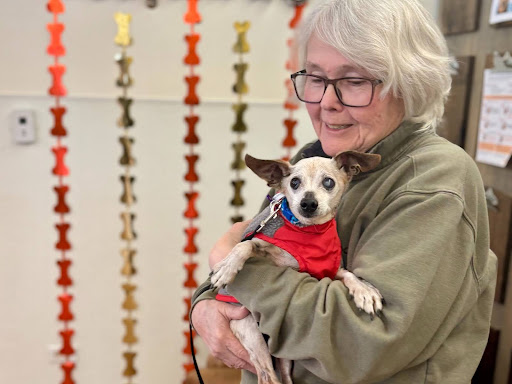Our small band of trekkers chuff-chuff-chuff across a snowy meadow at 9,000 feet on a crisp winter morning. A cloudless cobalt canopy stretches from mountain range to mountain range.
A plump brown mouse darts across the crusted drifts, seeking a seed or other edible tidbit. A snowshoe rabbit, startled by the hikers, darts for better cover.
When the hikers stop, the only sound is their breathing.
This is snowshoeing -- winter’s quiet sport.
Downhill skiing can be frenetic, expensive and complicated, with all the gear and lift lines and such. But sitting in the lodge in front of the fire, while pleasant, isn’t really a winter sport.
So consider a compromise: snowshoeing.
Basically, if you can walk, you can snowshoe.
Snowshoes today are narrower, lighter, and more comfy than ever – to the extent that they have revolutionized the sport. And it’s easy to put them on (with step-in bindings that adjust to fit any boot).
It’s less hassle than downhill. And the real beauty of it? It can be as easy or as challenging as you want.
Snowshoeing has been around for 6,000 years, if archeological records are accurate. Until the 1970s, though, it was used primarily for survival. It was a way for people who lived in rural areas to get around when the snow got deep.
In the late 1800s, an itinerant Methodist minister known as “Father” Dyer even made his way, on snowshoes, from mountain town to mountain town in the Colorado Rockies, ministering to his scattered flock. A church named for him stands in Breckenridge.
Today, snowshoeing is one of the fastest-growing areas of winter sports. Sales took off after the Redfeather Snowshoe Company near Leadville came up with the aluminum frame beaver-tail style in 1990. Today, consumers buy a million pairs of snowshoes a year, says the National Sporting Goods Association.
Here’ the appeal: You can snowshoe for hours and hardly see another soul. Unlike ski and snowboard runs, snowshoe trails can go where you want. Make it as easy or as aerobic as you like. Some people even run in snowshoes!
But they’re more coordinated than I am.
The idea is this: Take your time; do it at your own pace. There’s a freedom in it you don’t find in any other winter sport. It’s the closest thing you’ll get to meditating during exercise.
So , where to you go?
If you own your own ‘shoes, you can snowshoe just about anywhere. If you want groomed trails (which are especially nice for beginners), need to rent shoes, or even go with a guide, then start at a ski resort.
Just about every ski resort and Nordic center in Colorado offers the option to snowshoe. It’s a great
diversion for those who can’t, or don’t want to, downhill or cross-country ski.
Compared to skiing, snowshoeing is inexpensive. Trail passes sometimes run less than $20 a day at resorts with groomed trails.
If you need to rent shoes, plan to spend about $15. Guided tours can cost as much as $30 per person for groups.
Once you get to know an area well and have your own ‘shoes, you can do the sport pretty much for free.
Like any winter sport, snowshoeing requires a few words of caution, especially when you’re doing it at high altitude.
You’re exercising in thin, dry air, so stay hydrated by drinking plenty of water.
Even if the sun is shining, it can be cold. Wear layers, then peel or add clothing as needed. Remember, most of your body’s heat lost is from the head, so wear a hat. Gloves are important, too, as well as socks that wick moisture away from your feet.
Wear sunscreen. This is as important in winter as summer, especially at 9,000 or 10,000 feet.
Know where you’re going. Ask for a trail map. If you want to follow the Nordic trails already cut for snowmobiles or cross-country skiers, do so. But to really experience the fun of snowshoeing, venture onto untouched powder at least once in a while. It’s more work, but more fun, too!
And take it easy. This isn’t a race. Take time to pause and watch the snow plop off the branches, to listen to birds call, or watch a herd of deer.
That’s what snowshoeing is all about.
WEB EXTRA
Information: To find out if your favorite ski area offers snowshoe rentals, guided tours or groomed trails, go online to www.coloradoski.com and click on the resort of your choice.
Trails: For maps and directions to some front range trailheads, go to www.trails.com/stateactivity.aspx?area=12063 online.

Linda DuVal is the former travel editor for The Gazette, a freelance travel writer and winner of several Lowell Thomas awards. She is the co-author of Insider’s Guide to Colorado Springs and writes a local Web site, Pikes Peak on the Cheap (www.pikespeakonthecheap.com).
Colorado Traveler airs Sundays before the Splendid Table and Wednesdays at 11:55 am.







